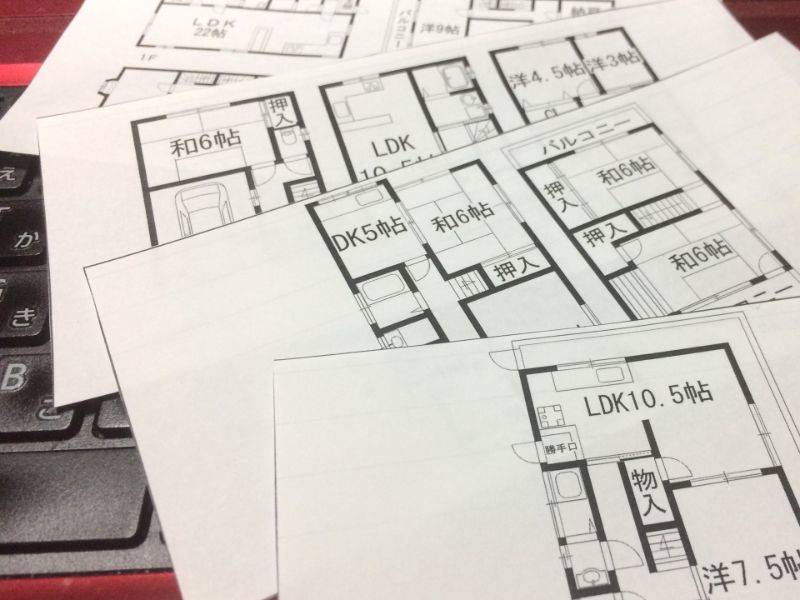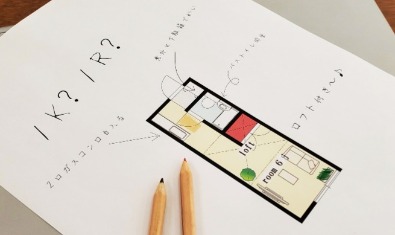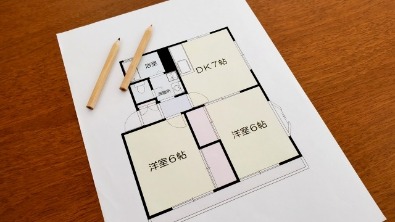Japanese Apartments: What’s the Difference Between 1R, 1K, 1DK, and 1LDK?
Tuesday, August 30, 2022
A beginners guide to Japanese houses. Understand the floor plans to help find the perfect home.

[Edited: May 28, 2024]
If you have ever searched for apartments in Japan you have certainly come across the acronyms R, K, DK, and LDK. Each of these letters is preceded by a number e.g. 1DK, 2K, 3LDK. But what do they all mean and how do they actually differ? Here is a basic guide to understanding Japanese apartment floorplans.
Terminology
- R: Room
- K: Kitchen
- D: Dining
- L: Living
- S: Service Room
- RF: Roof Floor

1R: ONE ROOM
1R translates to a studio apartment. There is generally no partition between the entrance and the living area and the bathroom is most often a Unit Bath, meaning the toilet, sink, and bathing area are all in one room. 1Rs tend to also come with a small kitchenette.
1K: ONE KITCHEN
A 1K apartment is slightly larger than a 1R apartment and is defined by the existence of a partition between the K (kitchen room) and the living/bedroom. Often the kitchen space doubles as a corridor into the main room or can be like a foyer at the entrance of the apartment (see image on the right). In terms of size, 1K apartments are not much bigger than 1R apartments, however, if your preference is to have a division of space, a 1K apartment can be something to consider.

1DK: ONE DINING KITCHEN
A 1DK apartment is a 2-room apartment where one room is a kitchen/dining area and the second room is a bedroom. The difference between a 1K and a 1DK is that a second room that is smaller than 4.5 tatami mats (6.12m2) is considered a K and anything between 4.5 to 8 tatami mats (6.12 ~ 12.96 m2) are considered a DK.
1LDK: ONE LIVING DINING KITCHEN
A 1 LDK is what is known outside of Japan as a standard one-bedroom apartment. In a 1LDK apartment, the living/dining/kitchen room is larger than 8.5 tatami mats (12.96 m2). These apartments are designed for multiple occupants (e.g. a couple) therefore the rent tends to be higher.


S: SERVICE ROOM
Finally, there is S, which refers to the service room. The size of a service room can vary from 1 square meter to the size of a living room but is categorized as “storage” space because the room doesn’t meet certain criteria according to the Building Standard Law, such as sufficient windows or ventilation. If the room is large it can be used for any purpose but because it is not considered a “living” space they tend to have inferior facilities such as outlets.

RF: ROOF FLOOR
RF or loft, in terms of building laws, is categorized as an attic/storage space. This means that no matter the size it is not considered part of the living space. However, the benefits of choosing an apartment with a loft are that it can function as extra space for your apartment. In addition, the ceiling will be higher in order to accommodate the loft space giving the apartment a more open feeling.
When looking for apartments in Japan understand that the number in front of the apartment description indicates the number of rooms, not the number of bedrooms, as is common in other parts of the world. The naming of spaces or floorplans is strictly determined by Building Standard Laws so make sure you understand the basics of how Japanese apartments are structured before you venture out looking for an apartment.
About the Author

I've been in Japan so long that I say my heart is Japanese. And still this country impresses me from time to time. In those moments I think, "That's why I love living in Japan."








